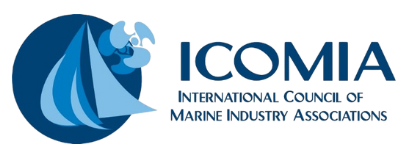VAT (19,6%) applies according to EU Directive and EU territoriality. VAT for seagoing rented or leased boats is modulated according to the time spent outside EU waters. As it is quite impossible for leasing or rental companies to calculate this time proportion, boats susceptible to leave territorial waters and equiped for that can apply a uniform reduction of 50% on the VAT rate. An annual tax (see Registration area above) in force for French flagged boats above 7 m Lh, both for hull and engines, calculated on hull length and engine fiscal power. A tax (“Droit de passeport”) also applies for third countries flagged boats when the owner is French resident. Boats coming from outside EU and sailing in French or EU waters more than 18 months, have to pay customs fees and VAT (19,6%).
RRG Country: France
Australia Belgium Canada Cyprus Czech Republic Denmark Estonia Finland France Germany Greece Hong Kong Hungary Ireland Italy Japan Netherlands New Zealand Norway Poland Portugal Singapore South Africa Spain Sweden Switzerland Türkiye United Kingdom USA website@icomia.org
-
France – Health & Safety/Exposure Levels
Styrene Exposure Levels – For all building facilities, 50 ppm styrene in force. For building facilities producing more than 1 ton of composite per day, solvent / VOC emission reduction scheme in force (this rule based on EU VOC Directive). The same for paint facilities having more than 5 tons of emissions per year. For facilities having both activities, the above regulations cumulate. (Reported November 2009)
-
France – Safety Equipment
A new national regulation is in preparation, probably in force in 2008. Three types of equipment would be defined for three types of navigation: basic / coastal / off shore. Until then, national regulations for safety equipment in force since 1st January 2005 (“Division 224”). Excepted for motorboats below 5m and sailing dinghies, the required equipment is different wether navigation is under or above 6 Nm from shelter. For more details, please consult FIN website : http://www.france-nautic.com
-
France – Registration
All sea-going craft greater than 2,5 m in length need to be registered. The Declaration of Conformity in French according to the 2003/44 amendment of the Directive is accepted (ADCO format). Seagoing craft over 7 m in length need a French flag act (“Acte de francisation”) and must pay an annual tax. Same for craft below 7 m but with engine power above 22 fiscal HP (about 200 HP). Craft below 7 m in length have a “Carte mer” (registration document). Registration in force for inland boats over 4.5kW and/or over 5 m.
-
France – Product Liability
EU Directive 99/44 transposed into French law by ordnance 2005-136.
-
France – Marinas and Harbours
Since 1st January 2008, all recreational crafts built after 1st January 2008 calling in marinas and organised moorings shall be fitted with holding tanks or on-board water treatment system. No specific performance is required. Loi du 3 janvier 1986 relative ? l’am?nagement, la protection et la mise en valeur du littoral, dite ‘loi littoral’ (concerns improvement and conservation of coastal and marine environment, and coastal development). Local improvement plans are foreseen for marinas and harbours. The implementation of EU Directive 2000/59 on port reception facilities requires pumping stations for waste products in marinas and harbours to be progressively installed. It is the same for boats on careen sites. The French ordnance n?2005-898 of 13th August 2005 transposes the EU Directive into French law.
-
France – Environment
Since 1st January 2008, all recreational crafts built after 1st January 2008 calling in marinas and organised moorings shall be fitted with holding tanks or on-board water treatment systems. No specific performance is required. Amending EU directive 2003/44/EC on noise and exhaust emission limits is in force since 1st January 2006. For boatbuilders and painters, EU Directive 99/13/EC is in force since May 2000. Two French VOC emission limit schemes are in place for large lamination facilities (over 1t per day) and for painting facilities (over 2t per year).
-
France – Construction Standards and Certification
Directive 94/25/CE (as amended by 2003/44) in force for new boats and boats from third countries. National rules in force for boats in French market before 16 June 1998. Boats placed on EU market before 16 June 1998 are accepted without specific rules. Boats excluded from the directive have to comply either with ISO standards (for example, amateur built) or specific flotation rules for sea-going kayaks and rowing boats. For these rules, self certification applies, except stability for category A and B boats, to be check by a notified body. The EU declaration of conformity format is accepted (available on http://www.icomia.com), but of course in French.
